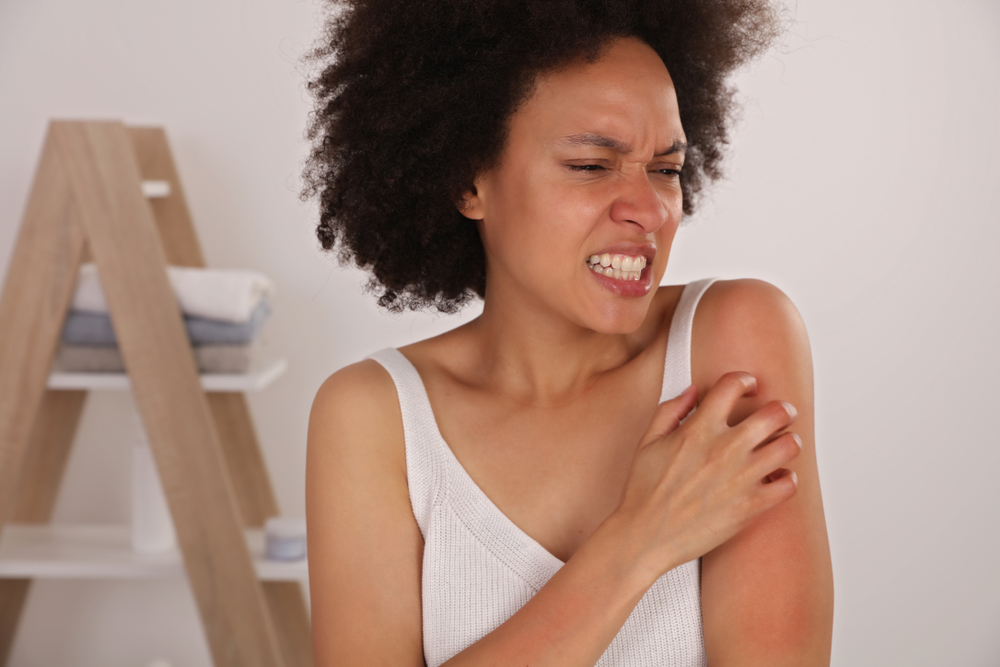Rashes on the body can be both uncomfortable and concerning, affecting people of all ages and backgrounds. These skin irritations may range from mild to severe, causing symptoms like redness, itching, swelling, and sometimes even pain. Understanding what to do about rashes on your body is crucial for maintaining skin health and overall well-being. In this article, we’ll explore the common causes of rashes, how to identify different types and effective ways to treat and prevent them. Knowing the right steps to take can help you manage and alleviate discomfort, whether it’s a minor irritation or a more serious condition.
Understanding Rashes: Common Causes
Allergic Reactions
Allergic reactions are a common cause of rashes. They occur when the immune system overreacts to a harmless substance. Common allergens include certain foods, medications, plants like poison ivy, and materials such as latex. Symptoms can range from mild itching and redness to severe swelling and blistering.
Infections
Infections caused by bacteria, viruses, fungi, or parasites can also lead to rashes. Some examples are bacterial infections like impetigo, viral infections like chickenpox and measles, fungal infections like ringworm, and parasitic infections like scabies. Identifying the type of infection is crucial for effective treatment.
Chronic Skin Conditions
Chronic skin conditions such as eczema, psoriasis, and rosacea can cause persistent rashes. These conditions often require long-term management and can be triggered by various factors, including stress, weather changes, and certain foods.
Environmental Factors
Exposure to environmental factors like heat, humidity, and pollutants can cause rashes. Heat rashes, for example, occur when sweat ducts become blocked, leading to red, itchy bumps. Similarly, contact with irritants like harsh chemicals or prolonged sun exposure can result in skin irritation.
Identifying Different Types of Rashes
Eczema
Eczema, or atopic dermatitis, is a chronic condition characterized by dry, itchy, and inflamed skin. It often appears on the face, neck, elbows, and knees. Managing eczema involves moisturizing the skin and avoiding triggers such as certain soaps, fabrics, and foods.
Psoriasis
Psoriasis is an autoimmune condition that speeds up the growth cycle of skin cells, resulting in thick, scaly patches that can be itchy and sometimes painful. Treatments include topical therapies, phototherapy, and systemic medications.
Hives
Hives, or urticaria, are raised, red welts that can appear anywhere on the body. Allergic reactions to foods, medications, or insect stings often cause them. Hives usually resolve independently, but antihistamines can help alleviate the itching and swelling.
Contact Dermatitis
Contact dermatitis occurs when the skin directly contacts an irritant or allergen. It results in red, itchy, and sometimes blistered skin. Identifying and avoiding the irritant is key to preventing further episodes.
Fungal Infections
Fungal infections like athlete’s foot and ringworm cause red, scaly, and itchy patches on the skin. These infections thrive in warm, moist environments and are commonly treated with antifungal creams and powders.
Effective Treatment Options
Over-the-Counter Solutions
Over-the-counter (OTC) treatments can be very effective for mild rashes. Hydrocortisone cream, antihistamines, and moisturizers can help reduce inflammation, itching, and redness. Calamine lotion and oatmeal baths are also soothing options.
Prescription Medications
Prescription medications may be necessary for more severe or persistent rashes. A healthcare professional can prescribe topical steroids, oral antihistamines, and antibiotics. Immunosuppressive drugs may also be recommended in cases of chronic conditions like eczema or psoriasis.
Home Remedies
Several home remedies can provide relief from rash symptoms. Aloe vera gel, coconut oil, and chamomile tea compresses are known for their soothing properties. Keeping the affected area clean and dry is also important to prevent further irritation.
Avoiding Triggers
Identifying and avoiding triggers is crucial for managing rashes, especially in allergic reactions and chronic skin conditions. Keeping a diary of flare-ups and potential triggers can help pinpoint specific irritants. Once identified, taking steps to avoid these triggers can significantly reduce the frequency and severity of rashes.
Preventing Rashes
Proper Skin Care
Maintaining proper skin care is essential for preventing rashes. This includes using gentle, fragrance-free cleansers and moisturizers, avoiding harsh chemicals, and protecting the skin from extreme temperatures and sun exposure. Regularly moisturizing the skin can prevent dryness and irritation, reducing the likelihood of rashes.
Wearing Appropriate Clothing
Appropriate clothing can help prevent rashes, especially in hot and humid conditions. Opt for loose-fitting, breathable fabrics like cotton, which allow the skin to breathe and reduce sweating. Avoid tight clothing and synthetic fabrics that can trap heat and moisture.
Diet and Hydration
A healthy diet and proper hydration play a role in skin health. A balanced diet of vitamins, minerals, and antioxidants supports the skin’s natural barrier function. Staying hydrated helps maintain skin elasticity and prevents dryness, reducing the risk of rashes.
Managing Stress
Stress can trigger or exacerbate many skin conditions, including eczema and psoriasis. Incorporating stress management techniques such as meditation, exercise, and adequate sleep can help improve skin health and reduce the occurrence of rashes.
When to Seek Medical Attention
Persistent or Severe Rashes
If a rash persists for more than a few days, worsens, or is accompanied by other symptoms like fever, pain, or difficulty breathing, it is important to seek medical attention. A healthcare professional can diagnose the underlying cause and recommend appropriate treatment.
Signs of Infection
Rashes that show signs of infection, such as increased redness, swelling, warmth, pus, or red streaks, require immediate medical evaluation. Infections can spread quickly and may require antibiotic treatment.
Allergic Reactions
Severe allergic reactions, known as anaphylaxis, can be life-threatening. Symptoms include swelling of the face and throat, difficulty breathing, rapid heartbeat, and dizziness. If these symptoms occur, seek emergency medical care immediately.
Conclusion
Dealing with rashes on your body can be challenging, but understanding the causes, identifying the type of rash, and knowing how to treat and prevent them can make a significant difference. By following proper skin care practices, avoiding known triggers, and seeking medical attention when necessary, you can effectively manage and alleviate the discomfort of rashes. Remember, maintaining overall skin health is key to preventing future occurrences and ensuring your skin stays healthy and resilient.
This story was created using AI technology.














